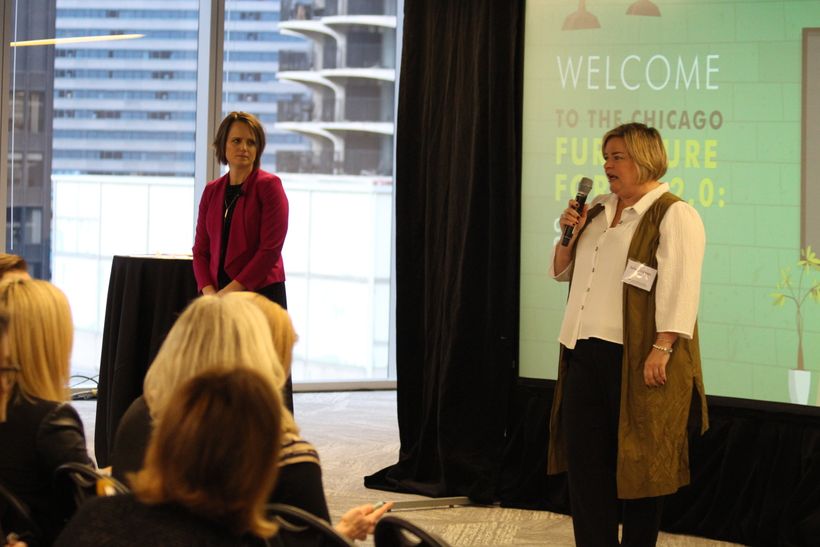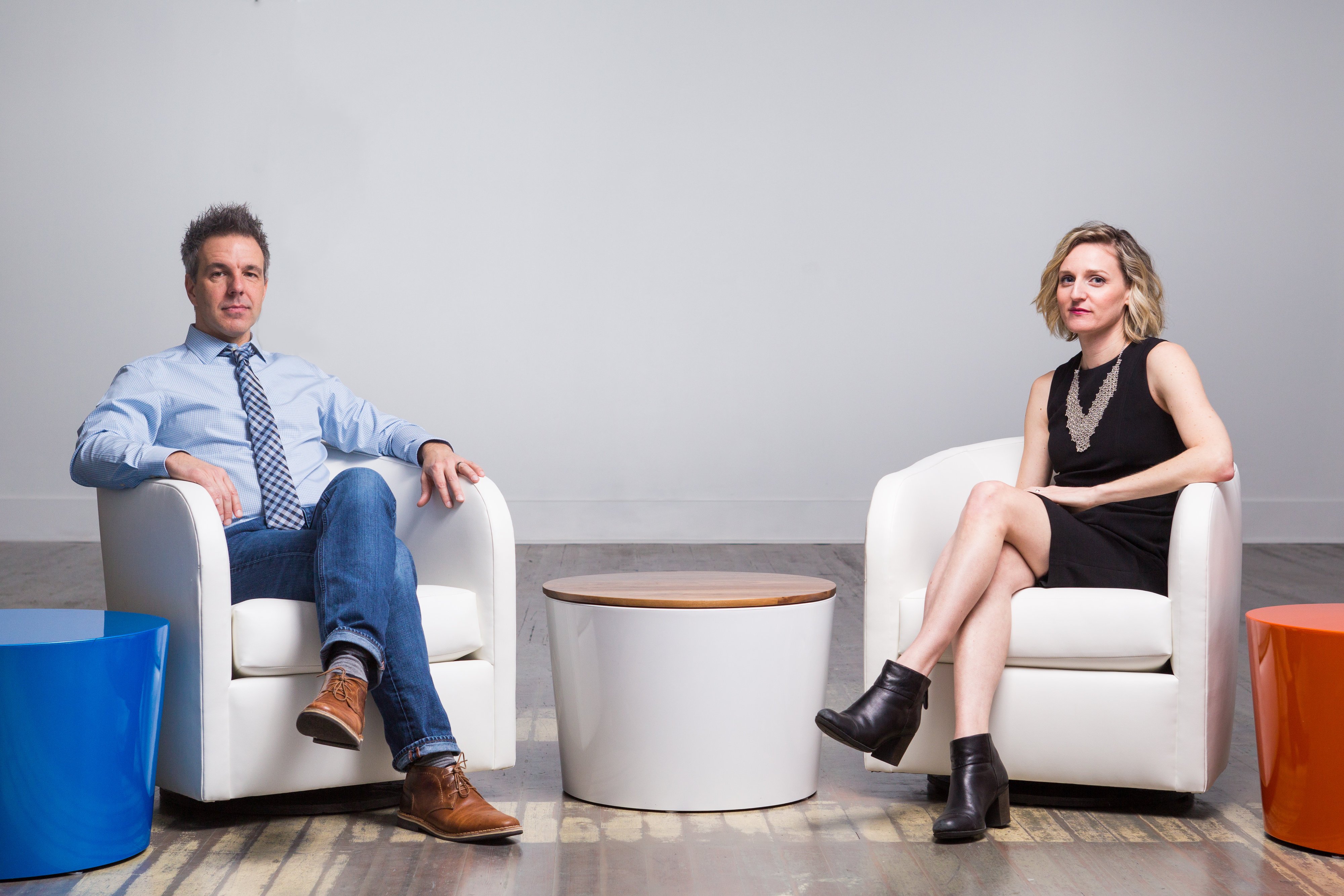
A recent Fast Company article starts with, “The tectonic plates of the fashion world are moving.” This is a beautifully dramatic lead-in, and, fascinatingly, much of what the article goes on to discuss could parallel major changes afoot in the Contract Interiors market, which was built upon specification of cubicles and panel systems but is drifting into a world of ancillary that may fundamentally change core elements of how this industry operates.
Here are three shifts to track in 2017 and beyond.
We ditch the term ancillary.
It’s just how we work.
The term “ancillary” was born to describe “everything else” on a floorplate when 80% of the floorplate was systems furniture. However, as ancillary nears – or sometimes exceeds – 50% of the floorplate in many projects, the term hardly holds true. Ancillary is becoming “primary” in many floor plates. Many brilliant workplace strategists, keen product development teams, and talented architects and designers are serving this industry well by doing their part to help design what this new world of work will look like in physical form, policy, and culture, but there is still much to figure out.
Heidi McClenahan, a Senior Project Manager with CBRE, who comes from a strong background in the architecture world, said, “Architecture has changed, and furniture is trying to catch up. The way people work is fundamentally shifting. We are now defining spaces 100% differently, and that is changing not only what we need, but who needs to be involved in the process and when. What used to be a three-person team from the architectural side (PM, Design, and Technical Staff) is now doubling in size. We now need change management to help people understand the change, workplace strategy to study how far we can push new ways of working, and furniture experts to help drive execution.”
McClenahan continues, “We still do traditional test fits to get the lease signed, but the space isn’t being built from those. Building offices and fitting furniture in these spaces is no longer a direct equation with status and titles. And with this shift, how we SHOULD be looking at it is by function first. What FURNITURE is needed to drive behavior? But because of today’s timelines when furniture is brought in and the length and complexities of the furniture buying process, we are often building walls BEFORE we figure out the furniture and architecture and furniture can’t complement each other. Over the past 1.5 years I have replaced more conference room tables than anything because by the time we figure out the furniture, we have already built the room.”
Dealers will make a comeback.
Some will evolve to be bold stewards of the furniture-buying process while others will innovate in yet undiscovered ways.
As the complexity that comes from this growing (we can’t call it) ancillary piece increases, timelines are staying the same, or in some cases decreasing. Additionally, it appears that the “rules of engagement” in contract furniture are changing. Contract brands are now “competing” with retail brands that don’t “play by the same rules” in terms of quality, construction and warranty, among other things. These factors are culminating in an increasing need for the role of the dealer, as many players involved are seeking a “furniture specialist” to help guide them through the intricacies– intricacies that will, mostly likely, only continue to expand and further emphasize the importance of the dealer in the furniture buying process.
Scott Lesizza, Principal with Workwell Partners, a Haworth Aligned dealer in New York, shares his thoughts, “I have never seen such a dramatic and rapid shift in the role that furniture dealers play. We were at one time primarily experts in our main lines, that occasionally supplemented those lines with alternate ancillary lines as an added service to clients. A particular project would be 80% primary line and 20% ancillary. A furniture designer would do elaborate furniture plans with the main focus being on workstations, private office and the occasional conference room. A dealer’s strength need lie in their expertise in that product, and their ability to deliver and install their primary line.”
Lesizza continues, “Fast forward to today. The skillsets required to manage a successful project have shifted towards being logistical experts, able to coordinate a project that is now 80% ancillary, and 20% open plan benches. Although having a skilled designer is important, more important is a team that can support up to 50 different ancillary manufacturers, multiple COM’s, obscure manufacturers that have traditionally been out of trade, and almost all having long lead times. The skillset that is now most important is for people that are extremely organized, that have relationships and an understanding of how to maneuver in the specialty furniture world, that are extremely efficient at scheduling, and to not be shy about setting expectation early and often with clients that don’t always understand that everything that we do is made to order. We now need to be experts on 100 different lines, not just one.”
Dave Bloch, President at INDEAL Inc., a buying group that is partnered with many top Contract Furniture Dealers in the industry echoed these thoughts saying, “Of the large contract dealers we work with, almost all of them now have a residential brand as one of their top 10 selling lines.” This has considerable effects when you consider that most of them don’t have the same payment terms or systems management as contract manufacturers. David Solomon, Managing Principal with Solomon Coyle echoes these thoughts, “The increased complexity that comes with more ancillary is having a considerable effect on dealer margins. As we look at best practices from the dealers we work with, design expense per project has nearly doubled over the past six years, but margin has certainly not increased to reflect that.” As we look at the change that will likely come in this industry, we have to look at those who have the most appetite to embrace change. Today, that’s the dealer.
Value will matter more than labels.
Customers are becoming more educated on product and want to know what they are paying for.
While Contract Furniture has always been focused on BIG, established brands (and still is, let’s be honest), it is evolving to also strongly emphasize design, value, and ease of use, which may include smaller, newer, less established but innovative brands in certain places. Aileen Sancho, Interior Designer with Stantec in Chicago, says, “Big companies still have such a big role in the project and we still have very strong relationships. They are going to drive who we select as a dealer partner. We are constantly being pushed by third-party project managers to ensure lead times and quality are met. Smaller manufacturers are still more of a risk. Workstations stick around for longer and we still look to the big brands there, but with ancillary, there are different requirements and the needs for that product are changing.”
This is where hospitality is coming into the workplace world in more ways than one. Sancho continues, “There is a push to create more and more options for “third places” within the workplace that blend a look and feel of hospitality spaces. Those types of spaces require us to look at some more unique and different lines. We have a project in Washington DC, there are chandeliers hanging in the reception area. That is a lighting fixture that there is no way we would have looked at 10 years ago. We are putting tufted couches in call centers. It goes as far as to blend with the landscape. Many companies are creating indoor-outdoor spaces that are creating the need to find innovative product in unexpected places. We turn to residential for pieces like credenzas, area rugs, pillows, and shelving. We are not looking there for a task chair.”
That said, it is more than just aesthetics. Sancho says, “The hospitality mindset is that furniture won’t last more than ten years. Average in the hospitality industry is historically much shorter and then they start to replace pieces of furniture.” We are certainly seeing this temporary mindset come to contract interiors as well.
Barb Riekse, Workplace Studio Leader, Stantec Chicago, supports Sancho’s ideas with some high-level perspective, “I think if you look at trends and the world in general, the rate of change is accelerating because of technology and that rate of change expands to workplace. Many clients today are not concerned about getting that furniture for the next ten years anymore. It’s too long. We are seeing lease cycles shortening. We have a whole business world full of people who will never forget 2008. People aren’t willing to take the risks to not have flexibility. It is why coworking spaces are getting more successful. They are safer for companies growing and shrinking.”
The immense change we have seen in recent years is unlikely to slow, and, in fact, may even accelerate as technology continues to evolve. Take, for example, this video at minute 1:20 of a new application of Microsoft Hololens technology shared by David Solomon with Solomon Coyle. Imagine a world where clients can see their space and order on the spot. Perhaps the biggest shifts are yet to come.
Featured Image: SPACE: WEWORK, SUBMITTED BY: STANTEC CHICAGO

